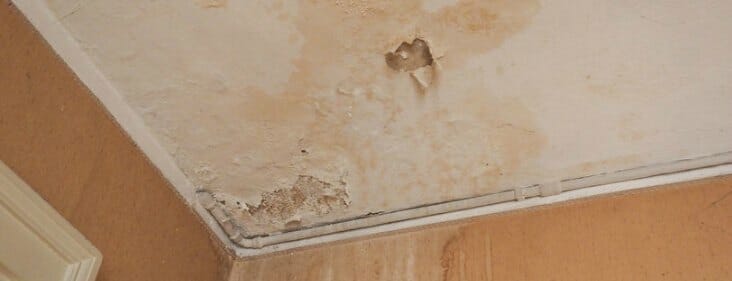We've encountered this post pertaining to Most Common Causes of Leaky Pipes down the page on the net and decided it made sense to discuss it with you in this article.

Leaks not just trigger waste of water but can additionally trigger unneeded damage to your residence and advertise undesirable organic development. Unfortunately, water leakages may go undetected since the majority of the pipework in our residence is hidden. By understanding and looking for daily circumstances that create leakages, you can protect your residence from future leaks and also unneeded damage. Today, we will consider six leakage creates that may be causing your pipes to drip.
Encroaching origins
A lot of water leakages begin outside the residence rather than inside it. You may see damp spots or sinkholes in your lawn, as well as that may mean that tree roots are getting into water lines triggering water to permeate out.
Corroded water systems
As time goes by, your plumbing system ages as well as rust such as rust might begin gnawing the pipelines. This might be the reason for discoloration or warping on your water pipes. This requires an assessment with your plumber immediately. If our plumbing system is old, consider changing the pipes because they are at a higher risk of corrosion than the newer models.
Defective Pipe Joints
The point at which your pipelines attach is frequently the weakest web link in the waterline. Pipe joints can deteriorate with time, resulting in water leakages. Unfortunately, most of pipe joints are not quickly noticeable. If you have noisy pipelines that make ticking or banging noises, specifically when the hot water is activated, your pipeline joints are probably under a lot of stress. It is advisable to have your plumber inspect your system once a year.
Immediate temperature level changes.
Severe temperature adjustments in our pipes can trigger them to broaden and also contract all of a sudden. This development and also tightening might trigger splits in the pipelines, particularly if the temperature level are listed below cold.
Poor Water Connectors
At times, a leakage can be caused by loosened hose pipes and also pipelines that supply your devices. In situation of a water links leak, you may see water running directly from the supply line or pools around your devices.
Clogged Drains
Blocked drains pipes might be aggravating and inconveniencing, however they can in some cases wind up creating an overflow leading to rupture pipelines. Keep eliminating any products that may drop your drains pipes that could obstruct them to avoid such aggravations.
All the above are causes of leaks but not all water leakages result from plumbing leakages; some leaks may come from roof covering leaks. All leakages must be repaired right away to avoid water damages.
Leakages not just create waste of water however can also cause unneeded damage to your residence and also promote undesirable natural growth. By looking as well as recognizing for daily situations that create leaks, you can shield your house from future leakages as well as unneeded damage. Today, we will certainly look at 6 leak triggers that might be causing your pipelines to trickle.
At times, a leak can be triggered by loosened hoses as well as pipelines that provide your appliances. In instance of a water connections leak, you may observe water running directly from the supply line or pools around your devices.
How To Check For Water Leak In Your Home
How To Check for Leaks
The average household's leaks can account for nearly 10,000 gallons of water wasted every year and ten percent of homes have leaks that waste 90 gallons or more per day. Common types of leaks found in the home are worn toilet flappers, dripping faucets, and other leaking valves. These types of leaks are often easy to fix, requiring only a few tools and hardware that can pay for themselves in water savings. Fixing easily corrected household water leaks can save homeowners about 10 percent on their water bills.
To check for leaks in your home, you first need to determine whether you're wasting water and then identify the source of the leak. Here are some tips for finding leaks:
Take a look at your water usage during a colder month, such as January or February. If a family of four exceeds 12,000 gallons per month, there are serious leaks.
Check your water meter before and after a two-hour period when no water is being used. If the meter changes at all, you probably have a leak.
Identify toilet leaks by placing a drop of food coloring in the toilet tank. If any color shows up in the bowl after 10 minutes, you have a leak. (Be sure to flush immediately after the experiment to avoid staining the tank.)
Examine faucet gaskets and pipe fittings for any water on the outside of the pipe to check for surface leaks.
Undetected water leaks can happen without the home or business owner even realizing. If you suspect a water leak, but not able to find the source. It is time to contact a professional water leak detection service, The Leak Doctor.
How To Find a Water Leak In Your Home
https://www.leakdoctor.com/blog/How-To-Check-For-Water-Leak-In-Your-Home_AE197.html

As a devoted person who reads about How to Find Water Leaks, I imagined sharing that excerpt was necessary. I beg you take the opportunity to promote this post if you enjoyed it. Thanks for going through it.
Protect plumbing integrity; connect now.